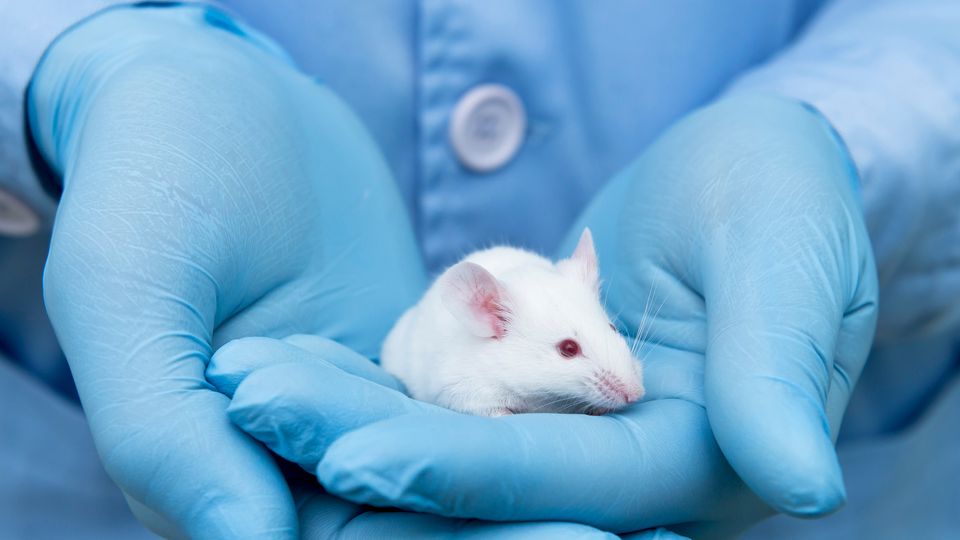Are Plans To Phase Out Animal Testing Realistic?
We ask Dr. Jeroen de Groot how drug developers can ease the transition from animal testing to human models.

Complete the form below to unlock access to ALL audio articles.
The US Food and Drug Administration (FDA) recently announced plans to phase out animal testing requirements, beginning with monoclonal antibodies and expanding to include other biological molecules and eventually new chemical entities. The roadmap, which encourages developers to leverage advanced computer simulations and human-relevant models, is designed to accelerate safety evaluation while reducing animal experimentation.
This transition, heralded by FDA Commissioner Dr. Martin A. Makary as a way to “get safer treatments to patients faster and more reliably, while also reducing R&D costs and drug prices,” is not an overnight process.
“Transitioning away from animal testing poses several challenges for the pharmaceutical industry,” Dr. Jeroen de Groot, divisional CEO at Ncardia, told Technology Networks. “Many existing workflows, regulatory expectations and historical datasets are built around animal models, so moving to new systems requires both scientific validation and operational change. Companies will need to rethink how they design studies, validate new methods and train teams to work with different technologies.”
How can developers ease the transition from animal models to cell-based models? de Groot suggests a phased integration rather than a full replacement overnight: “Start by identifying parts of the workflow where human cell models can immediately add value, such as early safety screening or mechanistic studies, and build experience and confidence from there.”
In addition, the models themselves need to be reproducible, available at scale and compatible with long-term programs. The proposed transition has been made possible by advances in human-based models, such as organoids and organ-on-a-chip systems, that better reflect human biology.
“For example, induced pluripotent stem cell technology has become highly reliable and allows the generation of specific human cell types like cardiomyocytes with consistent quality at scale,” said de Groot. “These cells can be used in standardized in vitro assays that are reproducible and suitable for long-term screening programs. Additionally, more complex systems such as 3D tissue models and organ-on-chip systems offer improved physiological relevance.”
To support a smooth transition, de Groot emphasizes the importance of choosing an optimized model. “It is important to prioritize models that are standardized, scalable and supported by strong validation data. These characteristics help ensure reproducibility and ease of implementation, which are critical for long-term success,” he said.
“Engaging early with regulatory agencies and staying informed about evolving guidelines can further support a smooth transition,” de Groot continued.
The roadmap also suggests the use of computer modeling and artificial intelligence to predict a drug’s behavior. For example, researchers at the University of Oxford have developed a computational humanization tool, Hu-mAb, that suggests mutations to an input antibody sequence to reduce its immunogenicity. “When integrated with in silico models that simulate drug behavior computationally, these approaches form a comprehensive toolkit,” explained de Groot.
An animal-free drug development pipeline
While the transition from animal to human-based models may not be immediate, the potential for greater predictability in human outcomes has the potential to accelerate drug development and reduce risk.
“Traditional animal models often fail to capture key aspects of human biology, which contributes to the high rate of clinical trial failures due to unexpected safety or efficacy issues,” de Groot said. “By using human-based models, researchers can detect toxicities or therapeutic effects earlier in development, helping reduce both risk and cost.”
Additionally, in vitro human models are more amenable to automation. “Human in vitro systems, particularly those that are scalable and automation-compatible, allow for higher throughput and more reproducible data,” said de Groot. For example, researchers have miniaturized and automated a human in vitro blood–brain barrier model for screening drugs that target the central nervous system.
Another benefit of embracing human-based models is the clear ethical advantages of reducing animal testing, which aligns with broader expectations from society and regulatory bodies.
Looking to the future, it is likely that the strong precedent set by the FDA’s roadmap will influence other regulatory agencies' stances. The European Medicines Agency (EMA) actively promotes the “3Rs” (replace, reduce, refine) and is developing roadmaps to phase out animal testing, particularly in chemical safety assessments.
“As confidence grows in the performance and reliability of non-animal methodologies, it’s likely that global regulators will move in a similar direction. Over time, this could lead to more harmonized standards that prioritize human biology and support innovation across the industry,” said de Groot.
“This shift has the potential to fundamentally reshape drug development pipelines by making them more predictive, efficient and human-relevant from the start. As human-based models become more integrated, companies can identify safety concerns earlier, reduce clinical trial failures and ultimately bring better therapies to patients faster,” he concluded.





